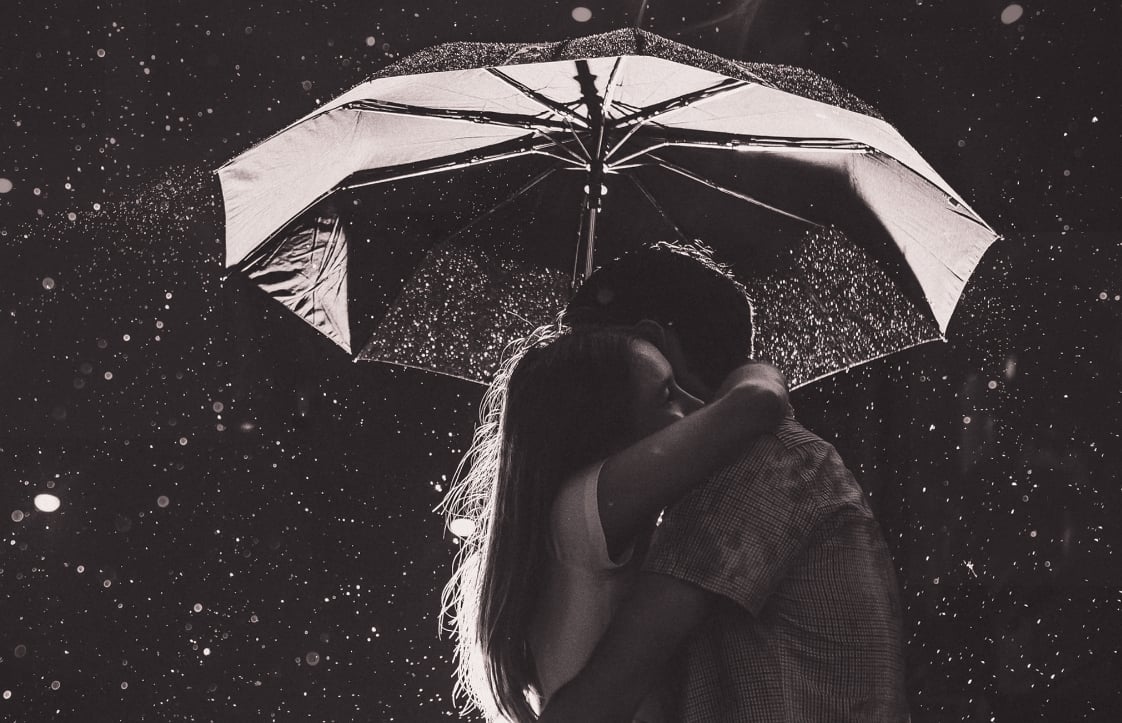“Black and white photos are best”
How many times have you heard your photography enthusiast friends say this? And how many times have you wondered if there’s some truth to this? As usual, it isn’t always erm… black and white, but there’s no doubt that monochrome photography definitely has some unexpected benefits.
These advantages make it a powerfully evocative and suggestive form of expression, regardless of the technology’s age. It’s not always easy to resist the beauty of black and white pictures: they have magnetism and sculptural shapes, plus a rich variety of shades able to fire the imagination and focus the viewer’s gaze on the main elements of the picture. If composed and shot carefully, black and white photos can be extremely poignant.
It’s no coincidence that, even nowadays, black and white portraits remain popular, and monochrome landscapes are considered among the most evocative. But to understand what black and white pictures are and when it’s better to use them, we need to step back in time and start from the beginning.
Are you ready?

BLACK AND WHITE PICTURES: from practical need to stylistic choice
First things first: photography was born in black and white.
This means that, for a long period after its advent in 1839, photographs were composed and developed in black and white only. Colour photos were invented almost a century later and they had to put up a hell of a fight to take over from their predecessor.
So, black and white was not a stylistic choice at first; it was a practical need. Professional photographers first, and amateurs later, were used to thinking about their work in black and white until colour film was invented.
They were so used to black and white that many of them refused to abandon it when colour film arrived (as so often happens when a technological revolution occurs), with many insisting on using black and white film and praising its superior quality.
This could be said to be true at the beginning, when colour film still had much room for improvement, but after a short teething period, it was in no way inferior to its black and white predecessor; as a matter of fact, it was arguably better. From that moment on, the decision to take black and white pictures was about nothing but aesthetics, and quality was no longer different in any way.
It was the beginning of a minor revolution. No longer the benchmark, black and white pictures were quickly replaced by colour photos and they went from being a practical need to a purely stylistic choice.

BLACK AND WHITE PICTURES: when colours distract
Let’s start with our main dilemma: “When and why is it better to take black and white pictures?”
First of all, colours can be disruptive for our attention.
Colour has a powerful effect: it attracts our focus, and can provoke intense sensations and deep emotions. Much research has highlighted the major influence of colours on our mood. This is useful when decorating a room or an office. Or when you are trying to sell a product by using colours that stimulate the impulse to purchase in logos, packaging and product design.
Such power sometimes makes colour more of a disadvantage for a photographer.
For example, when taking pictures of a marriage, the bright colours of a bridesmaid’s dress can steal the show by diverting focus from the bride. In this case, to turn the focus back to your main subject, you can shoot in black and white, especially if the picture had been composed to highlight the bride, and a bright colour nearby risks undermining its effect.
The more vivid your picture’s colours are, the greater the risk of diverting the viewer’s gaze from the main subject. In such instances, it can be better to turn the picture from colour to black and white in the post-production phase to see if this gets you closer to your desired effect.

BLACK AND WHITE PICTURES: bringing silhouettes and graphical elements to life
Black and white pictures have another major advantage: they highlight the silhouettes of geometric elements in the photo. By getting rid of the distraction caused by colours, black and white simplifies the picture and highlights all elements defined by their silhouette. This is why bridges, castles, buildings, bell towers and other architectural elements stand out better in black and white pictures.
The graphical elements that stand out better in black and white pictures are:
- The fabric or texture of an object
- Rhythmic or repeating patterns of similar objects
- Silhouettes
- The third dimension of objects
All these elements benefit from black and white, becoming more prominent because the lack of colour highlights their lines. For this reason, black and white photography is often used to show details of building, architectural elements or repeating geometric patterns.

BLACK AND WHITE PICTURES: highlighting contrast and shades
The lack colour in a picture highlights the contrast between black and white and makes shades of grey, somewhere between the two opposites, stand out. These shades, along with contrast, will become key elements of the shot.
For this reason, if you want to successfully convert a colour picture into black and white, you will have to carefully and precisely adjust the contrast: areas full of bright colour will turn white while the darker areas and shadows will turn black. In this situation, your light source becomes a useful instrument for playing with contrast. Keep this in mind when you taking your shots.

BLACK AND WHITE PICTURES: keep it simple
Want to know one of the most appealing features of a black and white picture? Simple, it’s… simpler!
When you get rid of eye-catching colours, the photo is cleaner and helps you concentrate on a few select elements. If you want to highlight a single element, placing the others in the background, you can convert most of the other colours to greyscale and have your main subject stand out in black.
You can do this in the post-production phase, making your main subject stand out from the elements in the background. By using black and white, you can simplify the scene to highlight the element you want to be perceived as the focus of the picture.

BLACK AND WHITE PICTURES: that “real” art look
To some extent, it’s fair to say black and white pictures look more “artistic”.
It’s not just a purist’s view, but a widely accepted truth: since colour pictures took over as the standard way of portraying reality with photography, it’s undeniable that black and white is an alternative way to portray reality beyond sheer realism.
In contrast to the fidelity of colour pictures in depicting reality, the binary coexistence of black and white offers alternative visual information and displays new interpretive possibilities in front of our eyes.
It’s no coincidence that black and white remains a popular stylistic choice for portraits.
Such a choice not only allows you to highlight the face or the silhouette of your subject, but it blurs the boundaries with reality, portraying the subject in a dream-like dimension. It’s this departure from reality, due to the lack of natural colour, that allows the photographer to provide their own personal perspective of the picture’s subject.
BLACK AND WHITE PICTURES: removing skin imperfections
A further, unexpected advantage of black and white pictures is that they help you hide any skin imperfections. Monochrome tones down, or even covers up, freckles, skin blotches and flushes present when you take the picture.
What’s more, if you convert a picture to black and white, you can also adjust the greyscale to clean up your subject’s skin. It’s an often overlooked benefit that can make a real difference in a photographic portrait.

BLACK AND WHITE PICTURES: projecting your shots beyond time and space
Black and white pictures can be much more than going beyond colour and true-to-life portraits of reality. They can create a timeless atmosphere. Colours help to locate photos in time, at the very moment they were taken. By removing them and working in black and white, the elements that can age the picture become less important.
The clothes and the accessories wore by the subjects, the billboards, the road signs, the architecture and the decorative elements in the picture will look completely different without their natural colours. Without such elements, and with proper editing, pictures can appear to be suspended in time and space. The viewer may not be able to clearly identify the time and the place the picture was taken because they lack colour reference points.
The expressive potential of black and white is huge for a photographer trying to take a highly evocative picture that pushes their artistic limits. It enables them to go beyond the simple depiction of reality and offer a different perspective of the world through their lens, outside our traditional notions of time and space.

BLACK AND WHITE PICTURES: you’ll have some intense editing sessions
Another major but often overlooked benefit of black and white pictures is their being particularly suited for editing. Once all the colours have been converted to black and white, you have an infinite grayscale you can use at will to edit photos, depending on your needs and the elements you want to highlight.
In black and white pictures, you can really play around with contrast and shades of grey, which is not as easy when editing colour photos. This feature allows you to edit the elements quickly and easily based on your objectives.
BLACK AND WHITE PICTURES: are they always better than colour photos?
We have just seen the many pros of black and white pictures, so we can now answer the age-old question:
“Are black and white pictures better than colour pictures?”
The answer is: it depends. It depends on the shot the photographer has in mind, it depends on the purpose of the picture, it depends on the light conditions, it depends on the editing skills of the photographer and, above all, it depends on what they want to communicate.
In many cases, there’s no substitute for colour pictures. But if the photographer wants to take advantage of the characteristics of black and white photos, then it’s likely the best choice. Check out this list of the best situations for taking black and white photos.
Black and white pictures are the best choice if you want to emphasise:
- Unusual geometric details like patterns, texture and the third dimension
- Landscapes, subjects or perspectives that lends themselves to contrast and shades
- When bright and vivid colours risk diverting attention away from the subject you want to portray
- Close-up portraits
- Architectural elements
You need to learn to imagine your pictures as if they were already in black and white. Try to visualise in your mind how you like your shot to look once converted into black and white. This mindset will help you choose the location, light source, and perspective and all the other elements that will help you achieve your objective.
The key is seeing in your mind’s eye the black and white picture you want to take in order to understand the best time, place, subject and objects to capture. Experiment! Have fun using your imagination, taking pictures, choosing the best and editing using your intuition. It’s a brave new black and white world!

BLACK AND WHITE PICTURES: THE PERFECT PRINT FOR A PERFECT PICTURE
Have you explored the locations, light sources, subjects and all the possibilities black and white pictures have to offer? If so, you can now bring all the magic of digital photography to paper! Black and white pictures make a wonderful gift for every occasion.
Visit the Gifta website where you will be able to print your black and white pictures on the following customisable items:
Black and white pictures are especially suitable for our canvas prints. Choose the size of your black and white photo, upload the preview of the picture, and if you find a frame you like, add it too. And voilà! Your incredible black and white picture is ready to be admired by your friends and family. There’s no more fitting reward after all the work you had to put in to take the perfect shot!
Happy snapping (and printing)!

